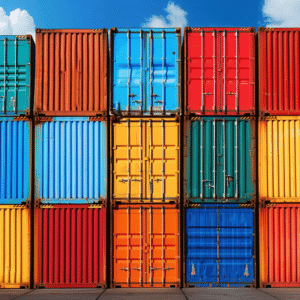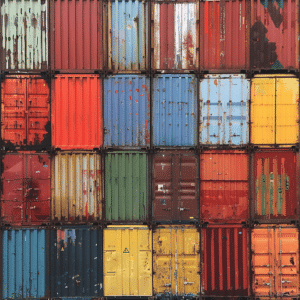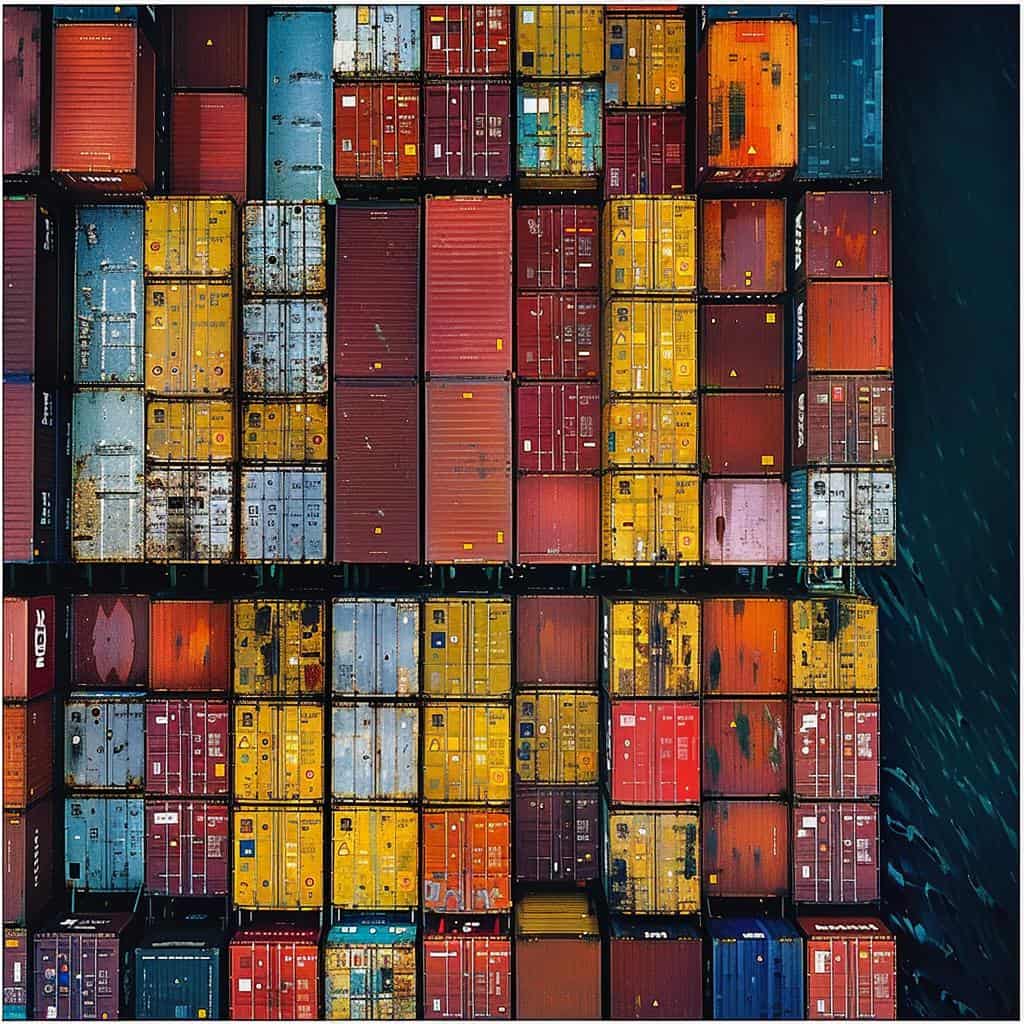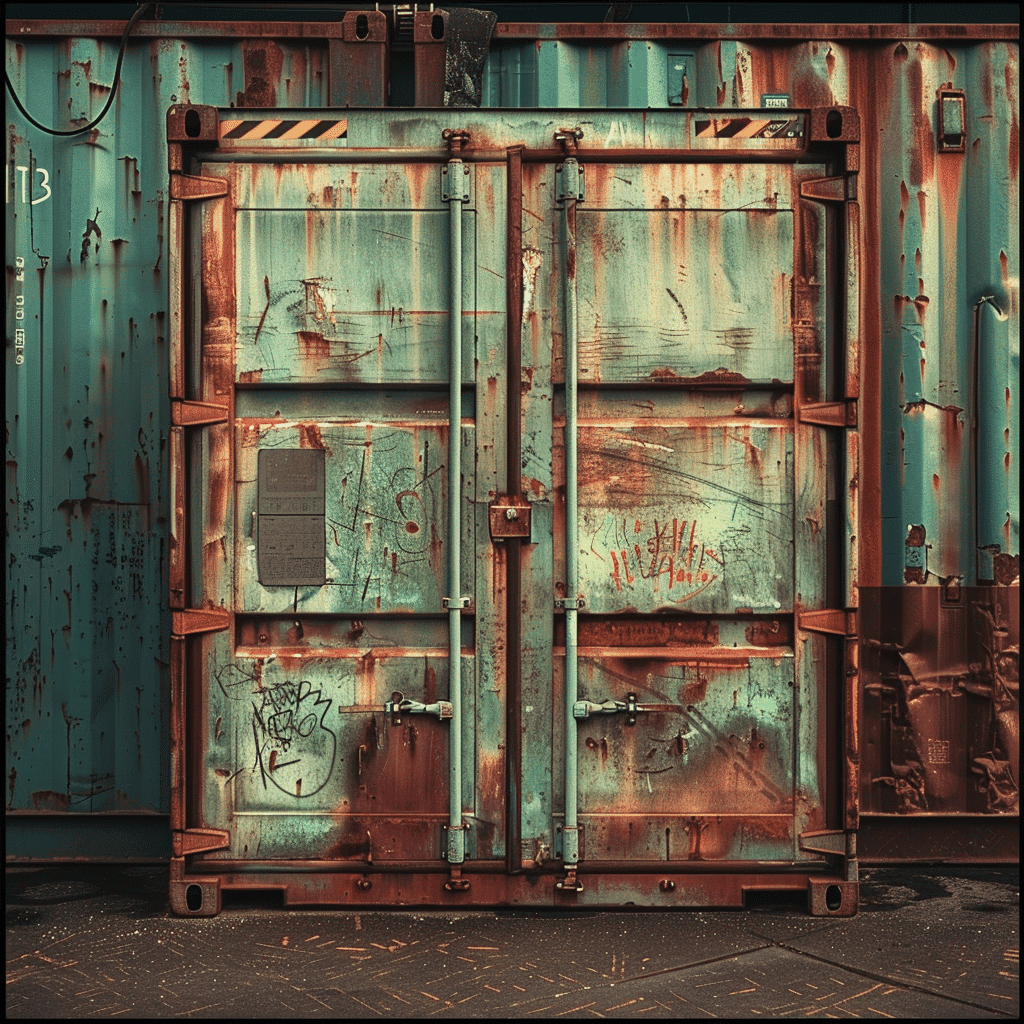When you’re venturing into the realm of shipping containers, it’s not just about a simple metal box. You’ve got to understand the importance of the container’s grade. It’s an intricate classification system that speaks volumes about its condition, previous usage, and suitability for your needs.
However, the jargon can seem like a dense fog, with terms like ‘One Trip’, ‘Cargo Worthy’, ‘Wind and Water Tight’, and ‘IICL’ floating around. Stay tuned and we’ll unveil the mystery behind these grades and guide you in making an informed decision.
The Importance of Shipping Container Grades
Understanding shipping container grades is crucial as it directly impacts your cargo’s safety, the container’s longevity, and ultimately, your shipping costs. Grades give you a clear picture of a container’s condition, thus helping you make informed decisions.
When it comes to shipping containers, there are different grades to consider. The highest grade containers are usually new containers, fresh from the manufacturer, and are of top-notch quality. On the other hand, used containers come in various container grades, which are often lower in comparison. These grades indicate the container’s condition, from ‘like new’ to ‘as is’, showing signs of wear, damage, or rust.
Being aware of the different grades is essential when looking to grade shipping containers for purchase or hire. You wouldn’t want to invest in a container that isn’t structurally sound or fit for your needs, right? So, always ensure to thoroughly inspect and understand the container’s grade before making a decision. This way, you’ll ensure the safety of your cargo, longevity of your container, and control over your shipping costs. Knowing the grades helps you make the best choice, maximizing your investment’s value.

New (One Trip) Shipping Containers
Let’s start with the top-tier, the new or ‘one trip’ shipping containers, which offer the highest quality in the grading system. These one-trip shipping containers are the cream of the crop in terms of shipping units. They’ve made only one trip, typically from the manufacturer to a domestic distributor, thus the name ‘one trip containers’.
These containers are essentially new and used containers rolled into one. They’re new because they’ve only been used once for cargo transportation, and used because, well, they’ve been used once. The primary advantage of one-trip containers is their pristine condition. Free from dents, scratches, or any structural damage, they’re a reliable choice for shipping cargo across continents.
One trip shipping containers are the gold standard in the shipping container industry. They’re the closest you can get to a brand-new standard shipping container without actually buying one directly from the factory. Yes, they’re more expensive than other grades, but if you’re after quality and durability, then one trip containers are undoubtedly a worthy investment. Remember, when it comes to cargo transportation, the condition of your shipping unit is paramount.
Cargo Worthy (CWO) Shipping Containers
Stepping down a notch in the grading system, you’ll find Cargo Worthy (CWO) Shipping Containers, which still maintain a high standard of quality and durability. These cargo worthy containers, also known as CWO, are second in the shipping containers grades hierarchy. They mightn’t be brand new, but they’re deemed suitable for transporting cargo overseas.
The key feature of cargo worthy containers is their structural integrity. They must be strong enough to withstand the rigors of ocean travel and stacking. This is where container grades provide a guarantee. You can trust that a CWO container has passed inspection by international container lessors and has a valid CSC plate, a mark of its fitness for sea travel.
Wind and Water Tight (WWT) Shipping Containers
Next on the list are Wind and Water Tight (WWT) Shipping Containers, known for their resilience against harsh weather conditions. You’ll find that these watertightcontainers, often just called WWT containers, are a popular choice in the shipping industry.
Here’s why you should consider them. WWT containers are more than just storage units; they’re a fortress against the elements. From a cargo ship battling the high seas to a storage yard in stormy weather, these containers keep your goods safe and dry. The secret lies in their design. The door seals are specifically made to keep wind and water out, ensuring that even in the harshest conditions, your cargo is protected.
Now, keep in mind that WWT containers are typically used containers. They’ve been through the rough and tumble of the shipping world, and they’ve proven their worth. But don’t worry about their past. Despite their history, they’re still among the most reliable container types around.
IICL Containers
Diving into the realm of IICL Containers, you’ll discover they represent the highest grade available in the shipping industry. These containers are the apex of quality, providing you with a container that’s virtually free of structural damage. They’re the perfect choice if you’re looking for A grade containers that require little to no maintenance over time.
As a grade container, an IICL is inspected thoroughly to ensure it meets the highest standards. It’s not just about looking pretty – these containers have to withstand the rigours of shipping, offering reliable protection for your cargo. The inspection process looks for any signs of damage that might compromise the container’s integrity. If there’s any need for minor repairs, they’re done to ensure the container remains in peak condition.
One key aspect of IICL containers is the CSC plate. This certification verifies the container’s safety for transport. It’s your assurance that the container is fit for purpose, ready to guard your cargo securely during shipping or provide robust storage. So, when you’re considering containers for shipping or storage purposes, an IICL is a top-tier choice. It’s a container that delivers on quality, safety, and performance.
As-Is State Containers
While IICL containers represent the highest quality in the shipping industry, you might find yourself considering ‘As-Is State Containers’ when budget constraints or specific use-cases come into play. As the name implies, ‘as is’ containers are sold in their existing condition, without any repairs or modifications.
This container type may have a history of previous repairs, major dents, prevalent corrosion, or structural issues. It’s imperative that you carefully inspect these containers for major damage before making a purchase decision. The grade of ‘as is’ containers can vary significantly, often reflecting their past use and handling.
However, don’t let this deter you. Despite their potential issues, ‘as is’ containers can be a cost-effective solution for your own use, particularly if you’re planning a project where aesthetic considerations are secondary to functionality.
In short, ‘as is’ state containers provide a more affordable, albeit potentially more time-consuming, alternative for those willing to tackle any necessary repairs themselves. But remember, it’s crucial to thoroughly examine the container to ensure that any defects won’t interfere with your intended use.
Refurbished Containers
If you’re looking for a shipping container that strikes a balance between cost and quality, refurbished containers might just fit the bill. Unlike a new container, which can be pricey, refurbished containers are typically made available for sale at a more affordable price.
Refurbished containers aren’t just any old containers. They’ve typically undergone a thorough inspection to ensure they meet certain grades or standards before they’re ready for purchase. This often involves fixing any structural issues, removing any rust, and applying a fresh coat of paint to the exterior. This process brings them as close to the condition of a new container as possible, but at a fraction of the cost.
While refurbished containers may have a history, they’re not worn out. The refurbishing process ensures that they’re up to the task of weathering the elements and keeping your goods safe and secure. So, if you’re seeking to strike a balance between cost and quality, consider a refurbished container. It’s a smart choice that offers quality at an affordable price. Not to mention that you can always refurbish them yourself with the help of some timber.

Choosing the Right Grade
Now that you’re familiar with refurbished containers, let’s explore how to choose the right grade for your specific needs. When choosing the right grade, it’s essential to assess conditions and consider your budget and requirements.
Firstly, A grade shipping containers are deemed worthy of being the top choice. They’re suitable if you’re looking for something almost new, with minor dents or scratches. However, they tend to be more expensive due to their near-perfect condition.
On the other hand, C grade containers come with many dents and visible wear and tear. They’ve lived a full life on the sea and show it, but don’t let this put you off. If you’re looking for a cost-effective option and the appearance isn’t paramount, then a C grade container could be just the ticket.
Frequently Asked Questions
What are shipping container grades?
Shipping container grades are classifications that indicate the condition, age, and overall appearance of a container, affecting its price and suitable applications. Various companies employ different grading systems, but the most prevalent categorizes containers into three main grades: A, B, and C. Grade A containers are in the best condition, often nearly new or lightly used, making them suitable for shipping and high-quality storage. Grade B containers show more signs of wear and are typically used for storage, while Grade C containers have sustained significant wear or damage and are often relegated to lower-grade storage or other non-transport purposes. It’s crucial to understand that these grading systems are not standardized across the industry, so the specific criteria for each grade can vary between suppliers.
What is the difference between A and B grade shipping containers?
The primary distinction between A and B grade shipping containers lies in their condition and usability. Grade A containers are in excellent condition, likely to be nearly new or lightly used, and are deemed suitable for shipping purposes due to their minimal wear and tear.
These containers typically have very few dents, scratches, or rust, maintaining a good cosmetic appearance and structural integrity. On the other hand, Grade B containers may exhibit more signs of wear, including a greater number of dents, scratches, and some rust, but they remain functional for storage purposes. While they might not meet the aesthetic or structural standards for certain shipping applications, B grade containers offer a more cost-effective solution for secure storage or less demanding transport needs.
What is C grade shipping container?
A C grade shipping container is typically one that has experienced significant wear and tear over its lifespan. These containers may still be structurally sound enough to qualify as Cargo Worthy or Wind and Watertight, but they exhibit clear signs of heavy use.
The interior of a C grade container often has extensive markings, scratches, and corrosion, while the flooring can show stains, markings, or moderate delamination. Although these containers may not have a valid CSC Plate, they can still serve various purposes, including storage or conversion projects, particularly for those looking for a lower-cost option and are willing to undertake necessary repairs or modifications.
What is a Class B shipping container?
A Class B shipping container, also known as a B grade container, typically falls under the category of being wind and watertight (WWT) but shows more signs of wear compared to higher-grade containers. While they may have some dents, scratches, and rust, they are still considered structurally sound for storage purposes.
These containers are older than A grade containers and may not have a valid CSC plate, but they are still airtight and watertight, ensuring the safety of the contents inside. B grade containers offer a balance between functionality and cost, making them a suitable choice for buyers needing reliable storage without the premium price of a new or A grade container.
Conclusion
Choosing the right shipping container grade is crucial for your cargo’s safety. If it’s new, opt for One Trip containers. For sea transport, Cargo Worthy ones are your best bet.
WWT containers ensure weather resistance while IICL containers promise rigorous standards. As-Is and Refurbished options are available for budget-conscious decisions.
Ultimately, it’s all about your unique needs, ensuring your cargo reaches its destination safely and efficiently.


